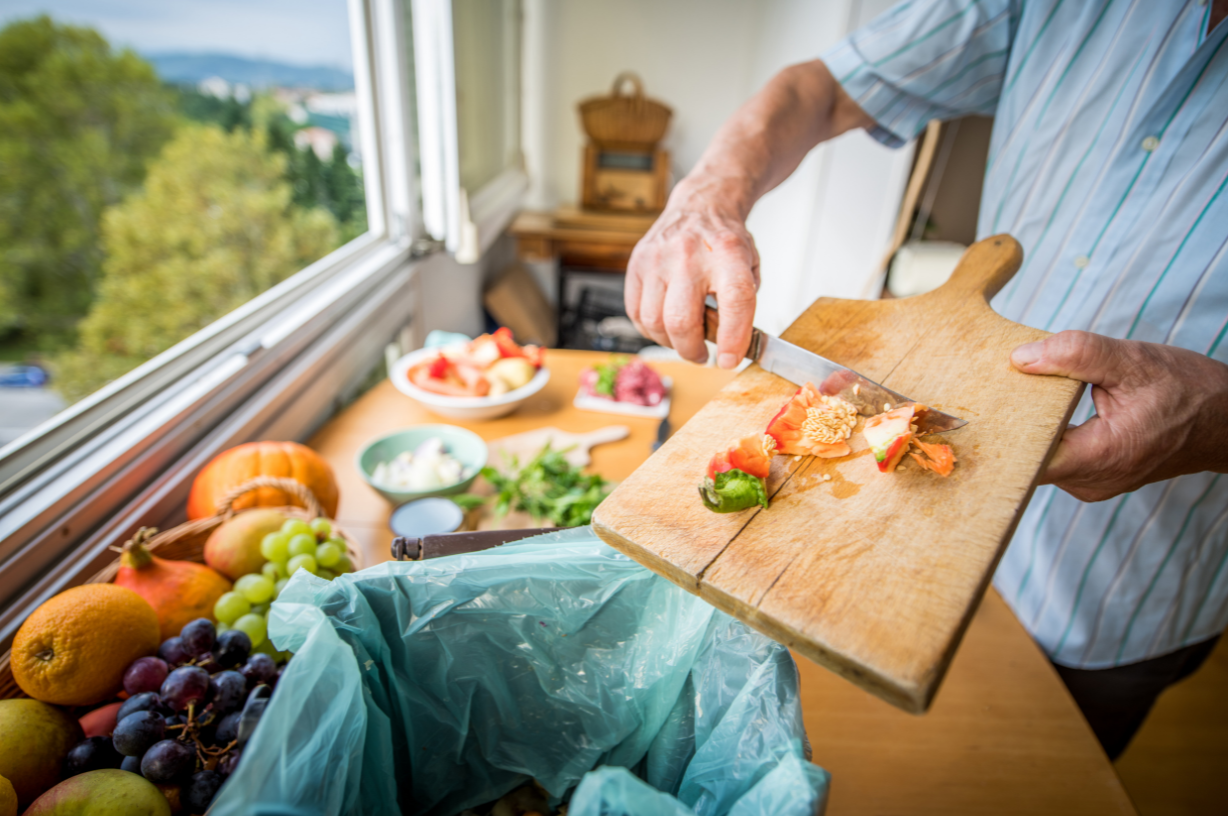In the modern world, plastic is ubiquitous. It has become an integral part of daily life. It wraps our food, holds our drinking water, protects our cellphones and is a part of everything these days from furniture to entertainment items.
Unfortunately, the negative impact of plastic on the environment is undeniable. Plastic pollution poses a significant threat to the ecosystem, wildlife and human health. To combat the problem and create a cleaner, greener planet, everybody needs to pull together and reduce their plastic consumption and waste as much as possible.
Fortunately, there are numerous small ways you can make a difference right at home.
Why Reducing Your Personal Plastic Consumption Is So Critical
It may shock you to learn that 300 million tons of plastic are produced every year – which is enough material to stretch to the moon and back more than 25 times!
That’s a lot of plastic for this little planet to handle, and far too much of it – roughly 80% – ends up in landfills. Roughly 8 million tons of the stuff eventually finds its way into the oceans. This kills marine animals, sickens sea birds and infuses the water supply with toxic “microplastics” that work their way throughout the human food chain.
If those dangers are not enough to signal the need for less use of plastic in production and manufacturing, here are some additional reasons for you and your family to limit its use:
- You Preserve Natural Resources: Plastic is derived from resources like fossil fuels, and those sources are finite. By cutting down on plastic use and increasing recycling, you help prevent the depletion of these precious supplies.
- You Minimize Energy Consumption: The production of plastic involves several energy-intensive processes which cause massive greenhouse gas emissions. By using less plastic, you reduce the demand for the material, thus indirectly reducing the energy demand and pollution caused by its manufacture.
While governments around the world look for ways to regulate plastic consumption and increase global recycling efforts, businesses are starting to look for sustainable alternative materials to put into use. However, consumers largely remain the driving force behind big changes.
Even though you may feel like you’re only one person on the planet taking a stand, you’re actually joining forces with a lot of other, like-minded folks who want to preserve Earth and its environment for future generations. Together, even minor efforts can turn into a major social force. With that in mind, let’s look closer at what you can do.
10 Tips to Reduce Plastic Consumption at Home
Every household has its own unique needs and rhythms, so adjust these tips as necessary:
- Ditch Single-Use Plastics: Start by eliminating single-use items like plastic bags, cutlery, water bottles and straws. Instead, use alternatives such as cloth grocery bags, reusable tableware and refillable water bottles (and just skip the straw).
- Buy in Bulk: Purchasing items in bulk reduces the need for excessive plastic packaging, and many bulk food stores encourage you to bring reusable containers for grains, nuts, candy and other pantry staples.
- Pick Cardboard Over Plastic for Purchases: If you have the option, choose cardboard packaging over plastic when you buy products for your home because cardboard is both biodegradable and easier to recycle. That means things like buying the milk in a carton and not the jug, or using the boxed detergent instead of the bottled.
- Use DIY Cleaning Products: Create your cleaning solutions using simple, non-toxic ingredients like vinegar and baking soda. Store your cleaning supplies in glass spray bottles to even further reduce your reliance on plastics.
- Say No to Disposable Tableware: If you frequently host friends or relatives over for meals and parties, hit a thrift store and get some cheap plates, cups and cutlery so that you don’t have to resort to the disposable options.
- Support Sustainable Brands: When you shop, buy from brands that use minimal or recycled materials in their packaging. By supporting companies that use eco-friendly packaging, you encourage other companies to do the same.
- Avoid Microbeads: Did you know that many personal hygiene products like facial scrubs and toothpaste contain plastic microbeads? If a product has “polyethylene” or “polypropylene” in its ingredients, pass it by. Opt for natural exfoliants, like apricot scrubs or products labeled “microbead-free.”
- Compost Organic Waste: By composting food scraps and yard waste, you reduce the need for plastic garbage bags for your trash and lawn cuttings, while also creating nutrient-rich soil for your garden.
- Use Your Own Cup at the Coffee Shop: If you’re lucky enough to have a coffee shop nearby that uses real china, frequent them. If not, take your own reusable coffee carrier with you to your favorite cafe and ask the employees to fill that instead of the foam, plastic or plastic-lined cups they normally give you.
These tips, when collectively used by many individuals, can make a real difference in our communities — and around the globe.
An Easy Way to Make Recycling Easier
You’ve heard the phrase before, but controlling your plastic footprint means you need to “reduce, reuse and recycle.” However, getting everybody in your household on board with recycling can be difficult. Different municipalities only allow certain things to be recycled, and it’s easy to forget about even those.
Experts suggest incorporating the “Nudge Method” in your efforts to encourage your family to make recycling a habit. Essentially, this is simply the process of prompting good behavior by making compliance easier and more engaging – without taking away personal choices and freedoms. Here are some tips:
- Make It Easy to Understand What Can Be Recycled: Consider putting signs up on the recycling bins that illustrate exactly what can go in them. Use colorful graphic images that catch the eye of adults and children alike.
- Put the Recycling Bins Where They’re Convenient: Nobody wants to trudge out to the garage to throw one plastic bottle into the recycling. Have a small bin right in the kitchen, bathroom and anywhere else that you might normally have a trash bin. That makes it easy to collect the recycling and cut down on trips to the larger receptacle.
- Make Recycling a Game With Rewards: If you have kids and you’re struggling to get them to recycle, turn it into a game with an appropriate reward. For example, set a recycling goal (like filling the bin) and reward the kids with pizza and movie night once they meet it.
Reducing plastic consumption at home is a small but significant step towards creating a cleaner, healthier planet and a greener tomorrow. Even if you start with just a few small changes, that can snowball into something much bigger. Meanwhile, enjoy the satisfaction of knowing that you’re taking steps to protect your family and their future.
bill.ingram@talktotucker.combrad.layton@talktotucker.comeditors-pickerina.pribyshchuk@talktotucker.comfeaturedlloyd.zimmerman@talktotucker.commark.callahan@talktotucker.commary.layton@talktotucker.compriscila.hale@talktotucker.comterri.mcgraw@talktotucker.com



